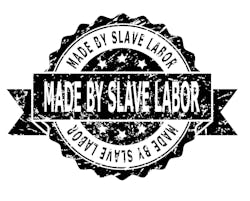While addressiing modern slavery risk is a priority to 71% of sustainable procurement leaders, in a recent survey by Gartner, just half report making effective progress on the issue.
The survey noted that Chief Procurement Officers (CPOs) cannot rely on achieving supply chain visibility alone to address modern slavery risks where adults and/or children are victims of forced labor. Instead, they said, CPOs must take a series of ongoing, proactive actions to mitigate and remediate forced labor being used within their organizations’ supply chains.
“Modern slavery is a risk to almost all supply chains,” said Laura Rainer, senior director analyst in Gartner's Supply Chain practice, in a statement. “It’s also one of the most challenging risks CPOs have to address; rooting out the practice requires visibility into multiple tiers of suppliers and a willingness to address issues in areas of the supply chain that traditional due diligence processes often fail to reach.”
Gartner completed a global survey in May 2023 of 104 procurement leaders that had recently participated in a sustainability initiative on their organizations’ progress in addressing modern slavery risk. Additional client conversations have indicated that procurement leaders often struggle after investing in supplier visibility and related technology initiatives, constrained from making further progress on the issue due a lack of resources, strategy or capability.
“Procurement leaders who have made progress on multitier supplier visibility should feel encouraged as accomplishing this step alone can be an overwhelming task,” said Rainier. “Once a baseline of visibility is achieved, however, procurement leaders need to embrace the ongoing work that is required to accurately monitor and mitigate the risks associated with the use of forced labor in global supply chains.”
The research recommends that CPOs start in addressing modern slavery risk with a focus on building greater visibility into their supply chains, including prioritizing the Tier-2 and Tier-3 supplier relationships most at risk via geography or commodity source. Rainier notes that achieving data visibility among these suppliers requires a mix of incentives and contractual obligations, and that technology will play a critical role in enabling the ability to map supply chain visibility.
Mitigate and Remediate Modern Slavery Risks
To avoid stalling progress on addressing modern slavery risk, Rainier says CPOs need to take a series of actions beyond improving supplier visibility to mitigate and remediate the risk on an ongoing basis.
CPOs should:
- Set and cascade policies: Ensure expectations around forced labor and modern slavery are clearly outlined in the supplier code of conduct. Suppliers must understand the nature and importance of the risk and how to comply. Suppliers must also cascade the supplier code of conduct and related policies around modern slavery to their suppliers.
- Conduct supplier trainings: Ensure that suppliers are aware of policies, especially when they go beyond the legal requirements. Support suppliers to identify risk factors. Train them to conduct due diligence on their recruitment agencies and upstream suppliers.
- Assess suppliers: Traditional supplier assessments often miss risks associated with forced labor. Mechanisms must be put in place to verify that local site auditors speak the language of workers and additional, non-traditional assessments should be contemplated with high-risk markets or commodities.
- Remedy issues: When issues are uncovered in audits it is critical for organizations to be ready to respond. Forging partnerships ahead of time, including with specific membership organizations focused on modern slavery, can help in ensuring best practices are followed in providing remedy or mitigating risk factors. Remedies should address the root cause of the issue and consider whether earlier steps in the plan, such as ensuring policies set for suppliers, are being adhered to.
- Embed risk mitigation throughout the supplier lifecycle: Starting with supplier selection and onboarding, embed modern slavery risk mitigation into the supplier life cycle starting with the RFP process, through supplier onboarding, contracts, scorecards and remediation policies.
